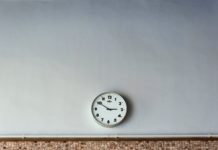
I think it’s safe to say I’m with the majority who enjoyed the extra hour of sleep we recently gained turning our clocks back for Daylight Saving Time. I will never say ‘no’ to more sleep. In fact, napping is one of my favorite pastimes which I perfected back in my college days. The 20 minute power naps in the library awkwardly slumped over in my chair might actually have been the key to my graduation.
The extensive studies done on the tremendous benefits of more sleep are compelling. And the St. Paul Public Schools took heed of these studies and are taking action. The St. Paul Public School Board (SPPS) passed the vote to push back school start times for its middle and high schools beginning in the 2018-2019 school year. Instead of starting their school day at 7:30am, students in secondary schools will get to hit snooze and begin their day refreshed at 8:30am. Because of this change, elementary schools will swap their time table and begin their day earlier at 7:30am instead of the current 8:30am start time. This move by the SPPS Board was decided in order to better align with teenagers’ biological sleep patterns. Changing start times to follow adolescents’ natural sleep rhythms puts the students at an advantage by creating an environment where they can be more rested and ready to learn.
A study done by the University of Minnesota on the impact of later start times for high schools, illustrates that teenagers best operate with 9 or more hours of sleep. However, a staggering 69% of high school students don’t even get 8 hours of sleep. Owing to the fact that teenagers have a delayed onset of melatonin, the chemical that regulates sleep, many students have difficulty falling asleep earlier. Teenagers’ natural sleep cycle begins around 11:00pm making it difficult to be fully rested for such an early start time to the school day. The study then goes on to show the vast benefits a later start time has for students and by default, parents and teachers alike.
Benefits for Teenagers
-
Boost in attendance
-
Decreased tardiness
-
Improved alertness in class
-
Better health and fewer trips to the nurse
-
Increase in students eating breakfast giving them energy for the day
While this change will positively impact students’ learning and experience of school, the decision also comes with logistical challenges for the schools and parents. Some of the concerns include interruptions with arrangements for childcare, after school sports and activities will run later, a disruption in evening family routines, less opportunity for after-school jobs, and busing and transportation logistics.
Even with these challenges, it seems well worth it for the increased well-being and immense benefits for the students. At the very least, they won’t have to resort to my old go-to power naps in the library.
















